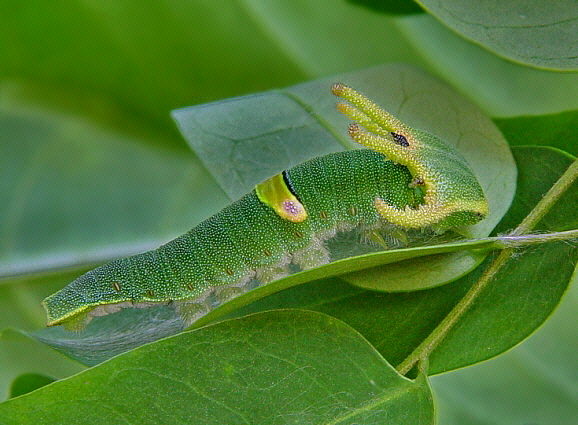
Introduction
There are 24 species in the genus Polyura, most of which are found in the Oriental region, although one species posidonius is restricted to Tibet and west China; 6 or 7 are endemic to various islands, e.g. andrewsi from Christmas Island and caphontis from Fiji; and one, pyrrhus reaches Australia.
Polyura schreiber is one of the most widespread species, being found in India, Sri Lanka, Myanmar, Thailand, West Malaysia, Singapore, Sumatra, Brunei, Sarawak, Sabah, Kalimantan, the Philippines and Java.
Habitats
To be completed.
Lifecycle
The caterpillars of the various species of Nawab butterflies vary in markings, but all feature a huge head which is adorned with a crown of 4 long horns.
In the case of Polyura schreiber, the caterpillar feeds on the leaves of Wagatea (Caesalpiniaceae), Rourea (Connaraceae) and Nephelium (Sapindaceae).
Adult
Nawab butterflies are characterised by their distinctive wing shape with twin tails on the hindwings – a feature strongly reminiscent of the African Charaxes. Most have dark brown uppersides with bands of dazzling creamy white which vary in size and shape from one species to another. These bands are repeated on the underside, usually in a beautiful shade of pale green. In a few species such as delphis the underside is almost entirely white.
